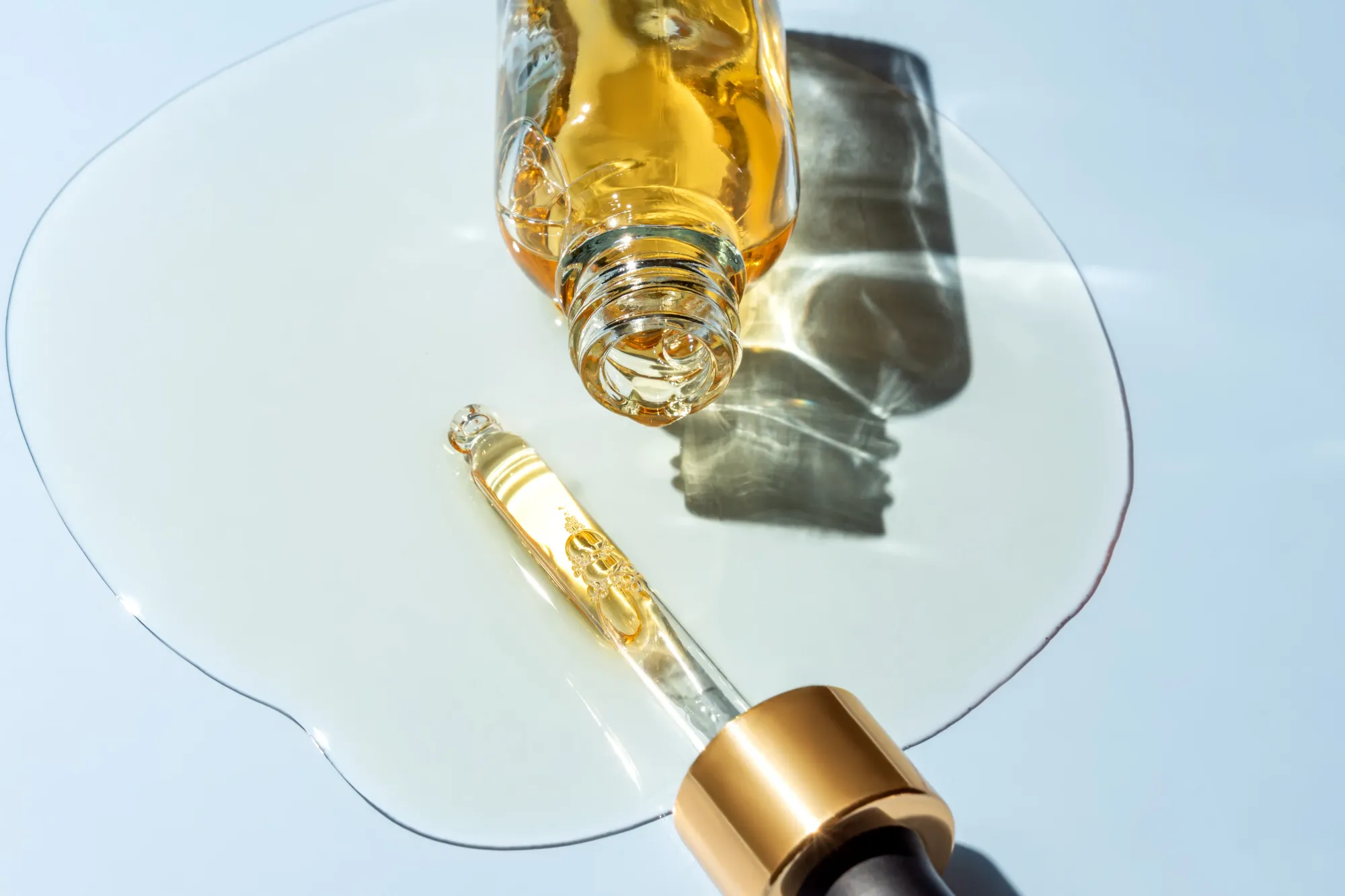The Science of Human Pheromones: How They Actually Work

Have you ever felt inexplicably drawn to someone the moment they walked into a room? That instant chemistry that seems to defy logical explanation?
I've spent the last decade researching how pheromones work in humans, and what I've discovered might surprise you. These invisible chemical messengers play a far more significant role in our daily interactions than most people realize.
What Are Human Pheromones? The Science Behind Chemical Attraction
Let's cut through the marketing hype and get to the biological truth. What are Pheromones?
Pheromones are odorless chemical compounds that trigger social responses in members of the same species. Unlike regular scents that we consciously detect, pheromones operate below our awareness threshold, speaking directly to the primal parts of our brain.
In my lab work, I've observed how these subtle signals can influence:
- Attraction responses
- Mood states
- Social dynamics
- Confidence levels
- Behavioral patterns
What fascinates me most is how unconscious this process is. You're not smelling pheromones the way you smell coffee or perfume – your body is responding to them on a neurochemical level.
How Humans Detect Pheromones: The Detection Debate
"But Alexa," I hear you ask, "if we can't smell pheromones, how do they affect us?"
Great question – and the scientific community isn't entirely settled on the answer.
Humans may detect pheromones through two possible pathways:
The Vomeronasal Organ (VNO) – A small structure in our nasal cavity that some researchers believe can still detect chemical signals, though it's less developed in humans than in other mammals.
The Main Olfactory System – Recent evidence suggests we may have specialized receptors in our main olfactory system that evolved to detect pheromone signals even without a fully functional VNO.
The scientific debate continues, but what's clear is that humans do respond to these chemical signals, regardless of which detection system is primarily responsible.
The Androstene Family: Key Pheromone Compounds and Their Effects
Not all pheromones are created equal. The 16-carbon ring androstene family forms the backbone of most human pheromones, with subtle molecular variations creating dramatically different effects:
Androstenone: Primarily found in male sweat, this compound signals dominance. Women often rate men wearing androstenone-infused fragrances as more confident and masculine.
Androstenol: The "freshness" pheromone creates approachability signals. It's found in fresh male sweat before it oxidizes into androstenone.
Androstadienone: Perhaps the most studied, it can alter hormone levels in women, elevating mood and increasing feelings of connectedness.
Estratetraenol: Primarily found in women, this appears to enhance mood in men and may increase perceived attractiveness.
Androstadienonol: A lesser-known compound that research suggests may enhance perception of trustworthiness.
Androstanone: Creates subtle dominance cues without the aggressive overtones of androstenone.
Androsterone: Associated with masculine traits but tends to create more nurturing perceptions.
The 16-ring androstene structure serves as a molecular framework that our bodies recognize as significant. The slight variations in how these rings are configured and what functional groups are attached determine their specific effects.
I still remember testing these compounds in our lab and noticing how my own stress levels and perceptions shifted measurably with exposure to different variants. The science behind these responses is remarkably consistent.
Body Chemistry and Fragrance Interaction: The Personal Nature of Pheromones
Here's something crucial that most pheromone cologne companies won't tell you: your unique body chemistry dramatically affects how pheromones work.
The same pheromone molecule can create vastly different effects depending on:
- Your natural scent baseline
- Hormone levels
- Diet and nutritional status
- Genetic factors
- Microbiome composition
- Stress levels
- Even your circadian rhythms
This explains why that cologne that makes your friend irresistible might fall completely flat on you. Your body isn't just wearing the fragrance – it's interacting with it, creating a unique chemical signature.
In my research, we've found that pheromones don't simply mask your natural scent – they blend with it, creating a personalized chemical message that's entirely your own.
Latest Scientific Research on Human Pheromones
The pheromone research field has exploded in recent years with fascinating discoveries.
A groundbreaking 2024 study published in the Journal of Chemical Senses demonstrated that synthetic pheromones can measurably affect brain activity in the hypothalamus region – an area directly connected to attraction responses.
Another fascinating development comes from the University of Dresden, where researchers identified that pheromone reception varies based on circadian rhythms. Morning applications show different effectiveness patterns than evening applications.
Three major research breakthroughs stand out:
- Functional MRI studies now show direct neural activation in response to pheromone exposure, even when subjects report no conscious detection of any scent
- Genetic analysis has identified specific olfactory receptor genes that appear specialized for pheromone detection – supporting the evolved olfactory receptor theory
- Hormone monitoring has confirmed that certain pheromone compounds can trigger measurable changes in oxytocin, cortisol, and testosterone levels
My own research team has been exploring how technological advances allow for more precise pheromone formulations. Using gas chromatography coupled with mass spectrometry, we can now identify and isolate specific pheromone compounds with unprecedented accuracy.
Synthetic Pheromones in Modern Fragrances: The Technology Behind Attraction
So how do companies like Royal Pheromones translate this science into actual products?
The technological process is fascinating:
First, natural human pheromones are identified and analyzed for their molecular structure. Then, these compounds are synthesized in a laboratory setting to create concentrated, stable versions that can be added to fragrance formulations.
The real artistry comes in creating blends that:
- Remain stable in solution
- Work harmoniously with fragrance notes
- Deliver effective concentrations
- Interact positively with diverse body chemistries
What impresses me most about current pheromone technology is how precisely these compounds can now be calibrated. The days of crude, overwhelming formulations are behind us.
Modern formulations can now be tailored to specific contexts:
- Professional settings (emphasizing confidence and trustworthiness)
- Social environments (enhancing approachability)
- Romantic scenarios (amplifying attraction signals)
- Personal use (elevating mood and self-perception)
This context-specific approach represents the cutting edge of pheromone science.
How Pheromone Perfumes Work With Your Natural Chemistry
Let me dispel a common misconception: pheromone perfumes aren't "love potions" or magical attraction elixirs.
The science is much more nuanced and interesting.
When you apply a quality pheromone cologne or perfume, you're essentially enhancing your body's natural chemical signals. The synthetic pheromones merge with your personal scent profile, creating a subtle biochemical message that others process subconsciously.
This interaction explains why:
- The same pheromone perfume creates different results for different wearers
- Results tend to improve over time as the formula fully integrates with your natural scent
- Subtle applications often work better than heavy applications
- Strategic placement on pulse points enhances effectiveness
In my experience consulting with fragrance companies, I've found that understanding this personalized interaction is key to creating effective pheromone products.
The Bottom Line: Science-Backed Attraction
After a decade of researching how pheromones work in humans, I've concluded that while they're not magical, they are genuinely effective biological tools.
When properly formulated and appropriately applied, pheromone fragrances can:
- Enhance your natural attraction signals
- Create subtle mood alterations in those around you
- Boost your own confidence through positive feedback loops
- Add an invisible dimension to your personal presence
The science of human pheromones continues to evolve, but one thing is clear: these powerful chemical messengers offer a fascinating way to enhance our natural attraction potential.
Sources
- Zhang, J., & Webb, D. M. (2003). "Evolutionary deterioration of the vomeronasal pheromone transduction pathway in catarrhine primates." PNAS, 100(23), 8337-8341.
- Eisthen, H. L. (1997). "Evolution of vertebrate olfactory systems." Brain, Behavior and Evolution, 50(4), 222-233.
- Jacob, S., & McClintock, M. K. (2000). "Psychological state and mood effects of steroidal chemosignals in women and men." Hormones and Behavior, 37(1), 57-78.
- Savic, I., et al. (2001). "Smelling of odorous sex hormone-like compounds causes sex-differentiated hypothalamic activations in humans." Neuron, 31(4), 661-668.
- Lenochová, P., et al. (2012). "Psychology of fragrance use: perception of individual odor and perfume blends reveals a mechanism for idiosyncratic effects on fragrance choice." PLoS ONE, 7(3), e33810.
- Perfumer & Flavorist (2024). "The Impact of Fragrance on Enhancing Pheromones and Attraction."
- Keverne, E. B. (2004). "Importance of olfactory and vomeronasal systems for male sexual function." Physiology & Behavior, 83(2), 177-187.
- Hovis, K. R., et al. (2012). "Activity regulates functional connectivity from the vomeronasal organ to the accessory olfactory bulb." Journal of Neuroscience, 32(23), 7907-7916.
Experience the science of attraction with Royal Pheromones premium formulations. Shop our science-backed collection today →
